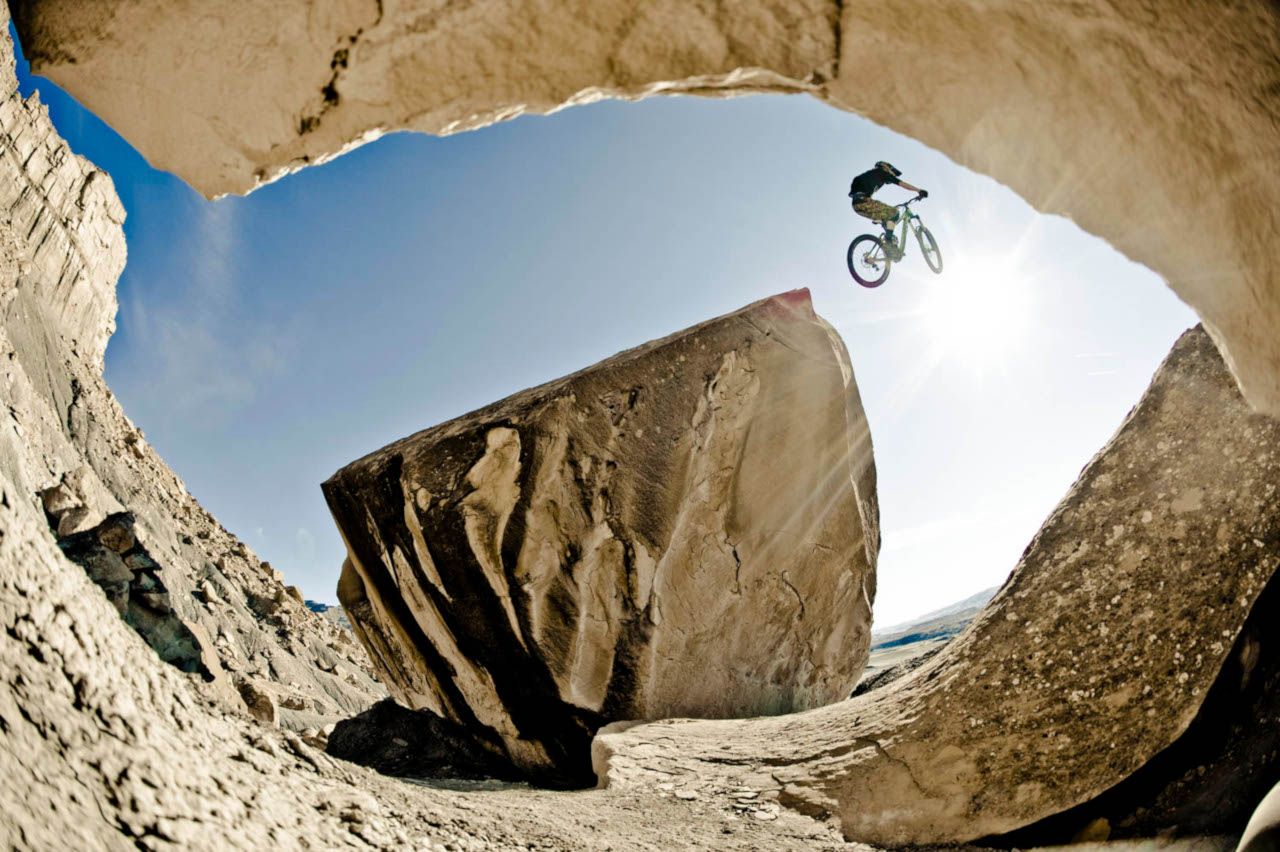MOUNTAIN BIKING PHOTOGRAPHY WITH SCOTT MARKEWITZ
1. SHOOTING IN THE TREES
One of the challenges of mountain bike photography is shooting in the trees, especially on a sunny day where extreme hot spots, splotchy shadows, and harsh contrast can be difficult to work with. But every challenge is a creative opportunity, and there are a few ways you can use this harsh light to create great images. One method is to look for backlit areas where the sun is behind the rider and set your exposure for the shadows. If the image looks too bright on your screen, adjust the exposure down until you find the right balance where the rider looks good and the foliage is lit up, creating nice highlights in your image.

2. GET CLOSE!
Unlike the warning on your car’s side-view mirror, “objects in mirror are closer than they appear”, the opposite is true with photography. When you’re shooting, your eye naturally focuses on the subject and often misses what’s happening on the edges of your frame, and sometimes a great action shot can get lost in the distracting stuff around it. To overcome this natural tendency for tunnel vision, either move in closer or zoom in tighter. It may seem too close for comfort, but once you get used to it, you’ll be able to capture more dynamic and engaging action images.


3. CREATIVE PERSPECTIVE
Finding new and interesting perspectives is a creative challenge for every photographer. One technique I’ve found that consistently produces results is to use foreground elements to add perspective and depth to my compositions. Look for rocks, trees, leaves, and other objects that you can use to frame your composition around the rider. With your lens focused on the rider, these foreground elements add depth and perspective to your composition and lead your eye to the action in the background.

4. THE PAN BLUR
The pan blur is a staple in every sports photographer’s bag of tricks. The concept is simple. Set a slow shutter speed on your camera, 1/30 sec is a good guideline, adjust your ISO and aperture for correct exposure, and follow the subject as they move past you, giving the image a sense of motion. The challenge is to follow the rider precisely so that they’re sharp in the image against a blurred background. For better results, use one of the focus points in your viewfinder to track the rider, follow them through the entire sequence, even after you’ve stopped shooting and breathe out steadily as you shoot to keep your body relaxed and the motion smooth and consistent.

5. KEEP IT FUN!
One of the keys to being a successful photographer is developing a good rapport with the riders. No matter how hard the shoot is or how long we’re out on the trail, I want everyone to enjoy the experience. Keep the communication open, take the time to explain to the riders what you want to achieve and get their feedback on your ideas. If they’re part of the creative process and everyone is on the same page, your chances of success go way up. And remember, mountain biking is fun! The more fun you have on a shoot, the more it’s going to show in your images!.

EXPLORE f-stop GEAR USED IN THIS STORY:
